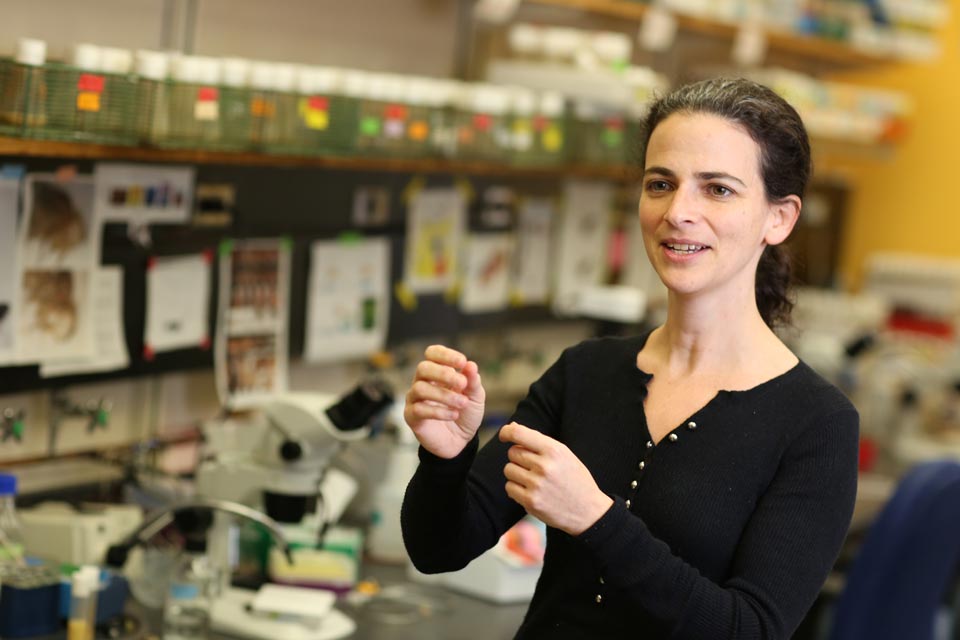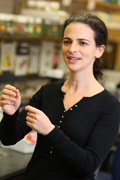Avi Rodal Makes Progress in Fight Against ALS

January 24, 2017
By Lawrence Goodman | Brandeis Magazine
Approximately 30,000 people in the United States suffer from the devastating neurodegenerative illness ALS (amyotrophic lateral sclerosis), also known as Lou Gehrig’s disease. As the disease progresses, patients’ muscles waste away, leading to an inability to speak, move and, eventually, breathe. Patients typically die within five years of symptom onset.
In 2016, assistant professor of biology Avi Rodal and her lab made a remarkable breakthrough when they enabled fruit flies paralyzed with ALS symptoms to crawl.
“We didn’t cure ALS in the flies,” says Rodal, “but we did make them significantly better.”
Normally, signals called growth factors travel from points throughout the human body to the spinal cord, where they promote the growth and survival of motor neurons. In patients with ALS, motor neurons eventually fail, leading to muscle decay.
Working with flies genetically modified to exhibit symptoms of ALS, Rodal and her colleagues were able to repair a vital signaling mechanism. As a result, dying motor neurons regained health, and once-paralyzed flies regained partial motion.
Rodal’s research focuses on vesicles, membranous “suitcases” within a cell that are packed with growth-factor molecules. Some vesicles are manufactured in the limbs where nerve endings make contact with muscle tissue. They then travel along nerve fibers, or axons, to the spinal cord, where the nerve-cell nuclei are located. Because axons can stretch several feet in length, the vesicles rely on “motors” that propel them quickly toward the spine.
In people with ALS, something malfunctions so that the growth factors can’t effectively communicate with motor neurons, triggering cell death. The big mystery is what exactly is going wrong.
Researchers in Rodal’s lab found that the problem occurs at the start of the vesicle’s trip, in the nerve endings. In the ALS-model fruit flies, the growth factors were packaged into the wrong kind of vesicle, and vesicle movement was faster and ranged over larger distances than the movement in fruit flies without ALS.
After Rodal modified the flies’ genes so the vesicles moved more like they do in healthy specimens, growth-factor function was restored, and the neurons recovered enough to allow the flies to crawl more efficiently.
“If we find a way to tweak the same trafficking machinery in patients as we modified in the fly,” Rodal says, “it might be a way to help return their neurons to a healthy state.”






